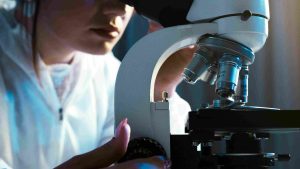UNAIR NEWS – The cardiovascular specialist of Universitas Airlangga Hospital, dr Hendri Susilo dr Sp Jp FIHA mentioned some common approaches to diagnose patients with heart attacks.
“Looking at the condition of a patient with complaints of unstable chest pain, the quality of pain scale 7 out of 10, radiates to the left arm and back, while the examination of vital and physical signs are normal, these could be signs of a heart attack,” explained dr Hendri.
According to dr. Hendri, there are differences in heart attack complaints in female and male patients. “In female patients, the symptoms are more unclear, and some complained of pain in the arm. Meanwhile, the characteristics in male patients are usually more specific and clear, such as feeling pressure on the chest, tightness, back pain, and fatigue,” said dr Hendri.
Complaints of chest pain that patients mention are usually described as pain with feelings such as being clamped, tied to a rope, or crushed on the chest.
“If the patient has complained of this, they should be more cautious because it is a sign of a heart attack,” said dr Hendri.
“In addition to these symptoms, other complaints that support them must be sought, such as pain that spreads to the arms, sweating, back pain, or sometimes nausea,” he mentioned. According to Dr. Hendri, four things must be ensured in patients who show signs of a heart attack.
“First, whether there is prolonged chest pain for more than 20 minutes. Then de novo, whether the patient really just felt the chest pain and had never felt that before,” explained dr Hendri.
In addition, doctors must ascertain whether the patient feels a heavier intensity of chest pain than usual and whether the patient is used to getting treatment and feel heavier pain.
“There is also a post-myocardial angina infarction, so patients who have had a heart attack and experience pain again if one of the four symptoms is found, in common terms, it can be considered a heart attack,” he said.
Dr. Hendri advised doctors and medical personnel at the health center that when handling patients with heart attacks, the main thing that needs to be done is reperfusion.
“Initially do a clear, short, and concise anamnesis by looking at the symptoms of a heart attack. When you are sure, do an ECG. If it shows any wave disturbances, immediately refer to the hospital,” he said.
He also emphasized that faster reperfusion will result in better outcomes in patients. (*)
Author: Thara Bening
Editor : Binti Q. Masruroh









